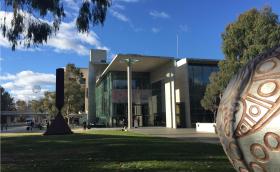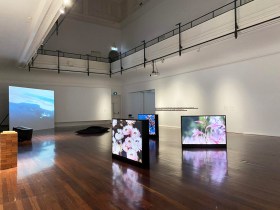It’s tax time, but you don’t have to worry. We spoke to Steven Miller and Frank Bombaci of Steven J Miller & Co about the steps you can take to make doing your taxes this financial year easier.
Since 1987, Steven J Miller & Co has provided accounting, taxation, audit and business advisory services to the arts community, small business and Superannuation Fund trustees.
Here’s their advice.
Step 1: Find out if you are a contractor or a “deemed worker”
There are a lot of different work types in the creative industries, including freelance and contract work. For many of us, this means operating as a sole trader under our own ABN. But it doesn’t always mean the person who hires you shouldn’t pay your Super or workers’ compensation insurance.
‘Where people work under contract with organisations, the employer generally says, “Just give us an invoice with an ABN, and everything will be fine.” But in a lot of cases where individuals work principally for their labour, skill and expertise, they could actually be considered to be “deemed workers”, and therefore the employer should be paying their super and covering their workers compensation insurance,’ explained Miller.
‘A lot of employers tend to waive that responsibility, so you need to be careful about that,’ he added.
Step 2: Carry forward your loss if you didn’t make money as an artist
Many artists don’t earn a liveable wage from their creative practice, so they tend to supplement their income with additional part-time work and create art on the side. But what if your creative practice is actually operating at a loss?
It all depends on how much you earn in your other job.
‘Where your other assessable income is more than $40,000, there’s a chance that if you make a loss in relation to your art practice, then you won’t be able to claim those losses against your other income,’ said Miller.
However, this doesn’t mean you won’t be able to claim the loss. It just means that you won’t be able to claim the loss in that financial year, because the losses are required to be carried forward until you earn sufficient future revenue.
‘Although there are other tests relating to plant and equipment and property ownership, the main test is the requirement to earn more than $20,000 in art practice income for you to be able to claim any loss incurred. So if your assessable income is greater than $40,000 in the year you will need to pass the income threshold or other tests. So don’t go hard on your expenditures if you feel there is a chance you won’t be able to claim that immediate advantage,’ said Miller.
Step 3: Learn what you can claim in the future before you spend big
Your trip to the Venice Biennale might not be a tax deduction after all. You have to ask yourself, “Is this travel specifically related to the work I’m doing?” The answer to that will be different depending on whether you’re claiming that cost as part of your art practice, or as an employee.
‘Lots of artists and creatives argue that they are undertaking professional development by attending art galleries and museums overseas. The ATO’s point of view on that is pretty much, “Well, everybody does that.” What the ATO will want to see is significant business activity i.e. business meetings, conference attendance, business development activities,’ explained Miller.
If the connection is too general in nature and not specifically connected to the work you do, then you might not be able to claim a deduction for the travel costs you hoped to. A good accountant will help you understand the difference.
To find out more, visit stevenjmiller.com.au






